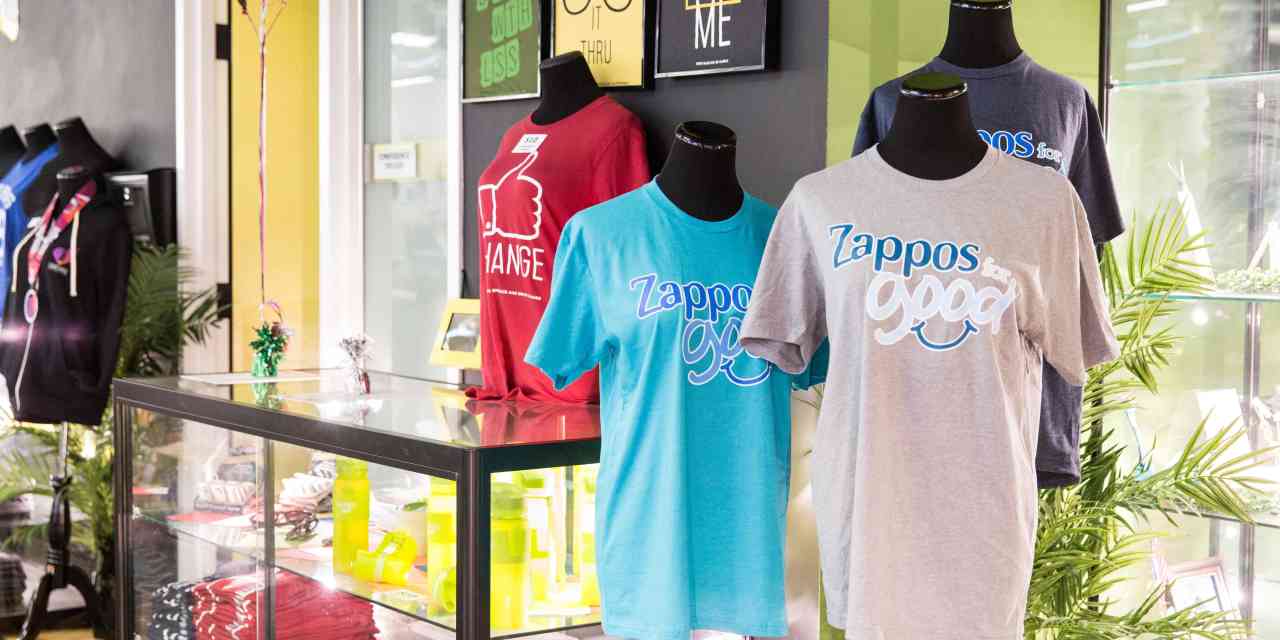How Zappos used AI to rebuild its search engine

Help us learn more about you and your job. Take our short audience survey now for a chance to win a $25 Amazon gift card.
Zappos, the Amazon-owned retailer that sells shoes, clothing and accessories online, is using machine learning and AI to improve the e-commerce experience, drive down return rates and smarten up search results.
The in-house team of roughly 20 data scientists, machine learning scientists and software engineers is led by Ameen Kazerouni, who is responsible for figuring out ways that predictive machine learning and artificial intelligence can reduce friction for people shopping Zappos’ site. In the past year, Kazerouni’s team has focused on two particular areas that customers struggle with: figuring out fit online, and getting accurate search results for queries that could have multiple different meanings to a search engine.
Both are key to driving online purchases. Zappos, which employs approximately 1,500 at its Las Vegas headquarters, generates $2 billion in revenue per year. The company, launched in 2001 and acquired by Amazon in 2009 for $1.2 billion, was an early e-commerce player for shoes and fashion, but the space has become increasingly crowded as digital consumer startups launch with more focused style curation. Having to sift through Zappos’ massive inventory selection can put the company at a disadvantage for time-pressed online shoppers, so the data science team has worked to get customers to what they’re looking for faster.
With a new model called genetic algorithms, Kazerouni and his team built better term recognition into Zappos’ search that pulls in historical data and quickly picks up on new keywords that are introduced as soon as fashion trends start to pick up speed. In addition to smarter results, customers also see more personalized results based on what they’ve searched for in the past.
“We see upwards of millions of unique search queries a month,” said Kazerouni. “Trying to capture the meaning of those words is where we saw this opportunity. It can be very difficult to put search into words, but general customer search queries are looking to track a feeling rather than product descriptions.”
Kazerouni used the example of the search term “classic short,” which is commonly used to find that style of Ugg boots. Instead of boots, the search engine was pulling up a variety of shorts.
“We now have a new search solution for every search term comes in,” he said. “What that means is when we see the term ‘classic short,’ [the algorithm’ recognizes for this particular term, short will not be weighed as a clothing type, it will be weighed as a product name. If someone comes in and looks for hiking shorts, it will look for shorts. So it’s learning in real time what attributes are relevant in specific terms.”
To gauge the success of the search algorithm, Kazerouni’s team looked for a reduction in multiple, similar search terms per person — if someone needs to keep refining a search themselves in order to find the product they want, that adds extra steps. It also looked at the number of search queries that resulted in conversion. After less than a year of using the genetic algorithm technology, Kazerouni said it was too soon to see if it contributed to driving repeat customer visits or longer-term customer loyalty — an important metric for e-commerce companies competing over mindshare — but that customers are now able to shop faster, are applying fewer filters, and aren’t doing multiple searches before they find what they’re looking for. “It’s an objectively simpler experience and it’s less frustrating,” he said.
For Zappos, investing in this type of internal technology is meant to also improve the cost of doing business only online. As made clear by e-commerce brands relentless parade into physical retail stores, there’s an inherent barrier online for people who would rather see and try on items in person first. One of Zappos’ biggest barriers is its vast, overwhelming inventory: Selling hundreds of thousands of items online is good for selection but can lead to decision paralysis or frustration. To drive more customers to purchase, Zappos offers free returns up to a year after purchase, which Kazerouni said is a good customer incentive, but costly.
To help keep free returns and diminish return rates, the data science team also built a fit finder that suggests sizing based on customer reviews, past purchases and brand particularities.
“Lowering the return rate is one of our priorities. Returns are expensive. We could start charging for returns, or limit them per person,” said Kazerouni. “Instead, we invest in solutions that make it better so customers return less.”
As an Amazon brand, Zappos isn’t going to be letting up on competitive shipping and return policies — the company is run separately, but Amazon took over Zappos’ warehouses when it acquired it — so, following search, the fit finder is the second step in the AI-driven process meant to get more customers to buy.
“A retailer has to really understand customer service to feel like a good shopping experience,” said Malinda Sanna, founder of the agency Spark. “Companies like Zappos have taken it to the new level and redefined what an online shopping experience can be.”
That experience is an internal priority as the company builds out its data team. Kazerouni said that Zappos’ data scientists are given full reign to build new technology and models in house, as long as they believe they can build it better than what’s on the market.
“At the end of the day it’s not a recurring expense — once it’s working, it’s working.”
